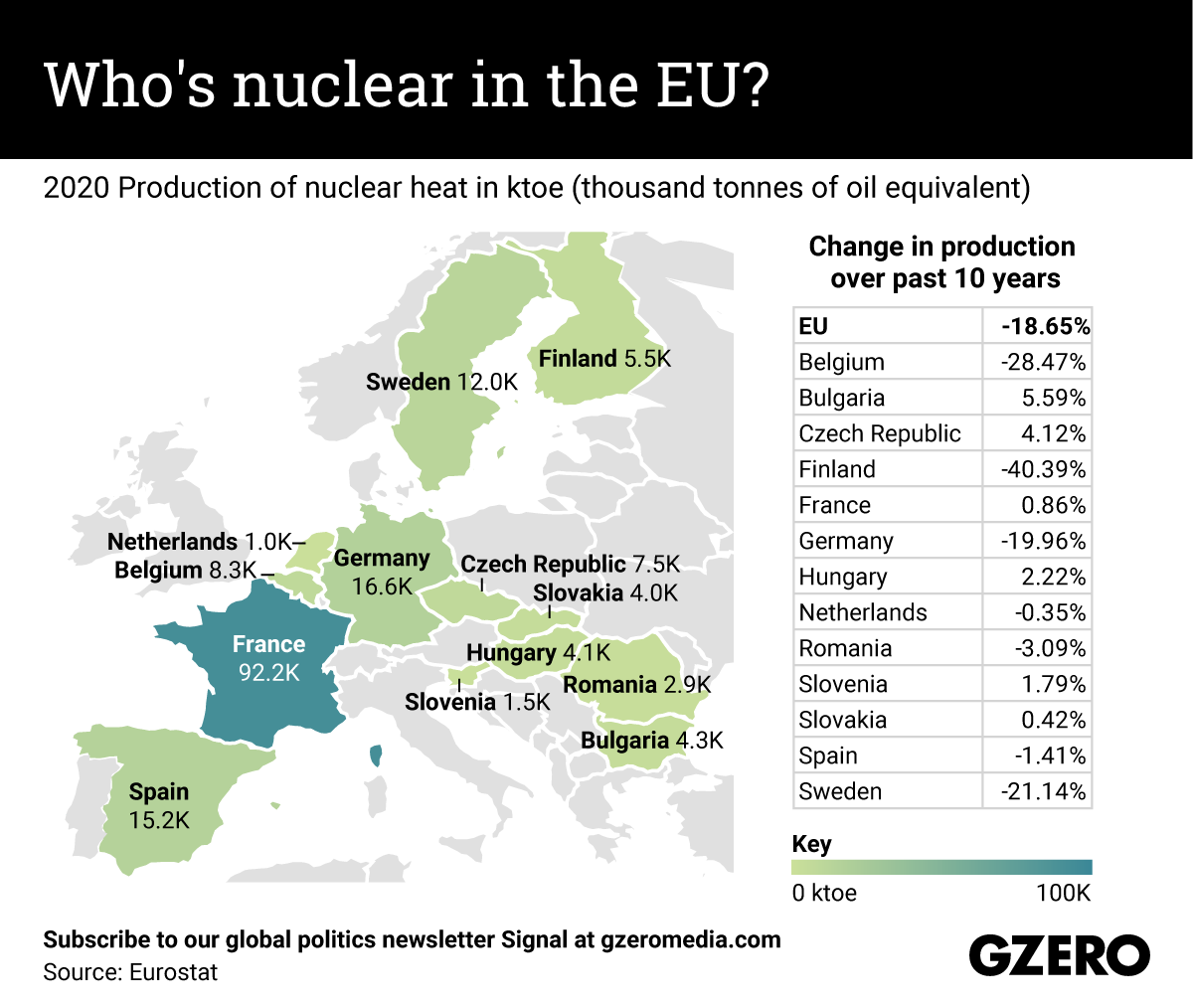When Russian troops shelled the Zaporizhzhia nuclear plant in southeastern Ukraine on Friday, many feared it could cause a Chernobyl-like catastrophe. But even before this event, the status of nuclear energy within Europe has been a massive point of contention. Since the Fukushima disaster in 2011, European Union states have bolstered their guidelines for nuclear power safety, but some have been trying to phase it out altogether. Last month, the European Commission outlined how nuclear energy could be labeled a “green” investment (presuming the plants can safely dispose radioactive waste). Critics labeled the move as “greenwashing,” and Austrian Chancellor Karl Nehammer tweeted that “Nuclear power is neither ‘green’ nor sustainable.” So how might this latest scare in Ukraine change Europe’s nuclear calculus, if at all? We take a look at which EU states produce the most nuclear heat, and how that’s changed since 2011.
The Graphic Truth: Who's nuclear in the EU?

Ari Winkleman
